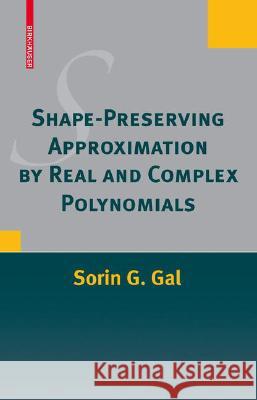Shape-Preserving Approximation by Real and Complex Polynomials » książka
Shape-Preserving Approximation by Real and Complex Polynomials
ISBN-13: 9780817647025 / Angielski / Twarda / 2008 / 352 str.
In many problems arising in engineering and science one requires approxi- tion methods to reproduce physical reality as well as possible. Very schema- cally, if the input data represents a complicated discrete/continuous quantity of information, of shape S (S could mean, for example, that we have a monotone/convex collection of data), then one desires to represent it by the less-complicated output information, that approximates well the input data and, in addition, has the same shape S. This kind of approximation is called shape-preserving approximation and arises in computer-aided geometric design, robotics, chemistry, etc. Typically, the input data is represented by a real or complex function (of one or several variables), and the output data is chosen to be in one of the classes polynomial, spline, or rational functions. The present monograph deals in Chapters 1 4 with shape-preserving - proximation by real or complex polynomials in one or several variables. Chapter 5 is an exception and is devoted to some related important but n- polynomial andnonsplineapproximations preservingshape.Thesplinecaseis completely excluded in the present book, since on the one hand, many details concerning shape-preserving properties of splines can be found, for example, in the books of de Boor 49], Schumaker 344], Chui 69], DeVore Lorentz 91], Kvasov 218] and in the surveys of Leviatan 229], Koci c Milovanovi c 196], while on the other hand, we consider that shape-preserving approximation by splines deserves a complete study in a separate book."











